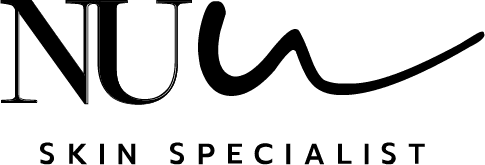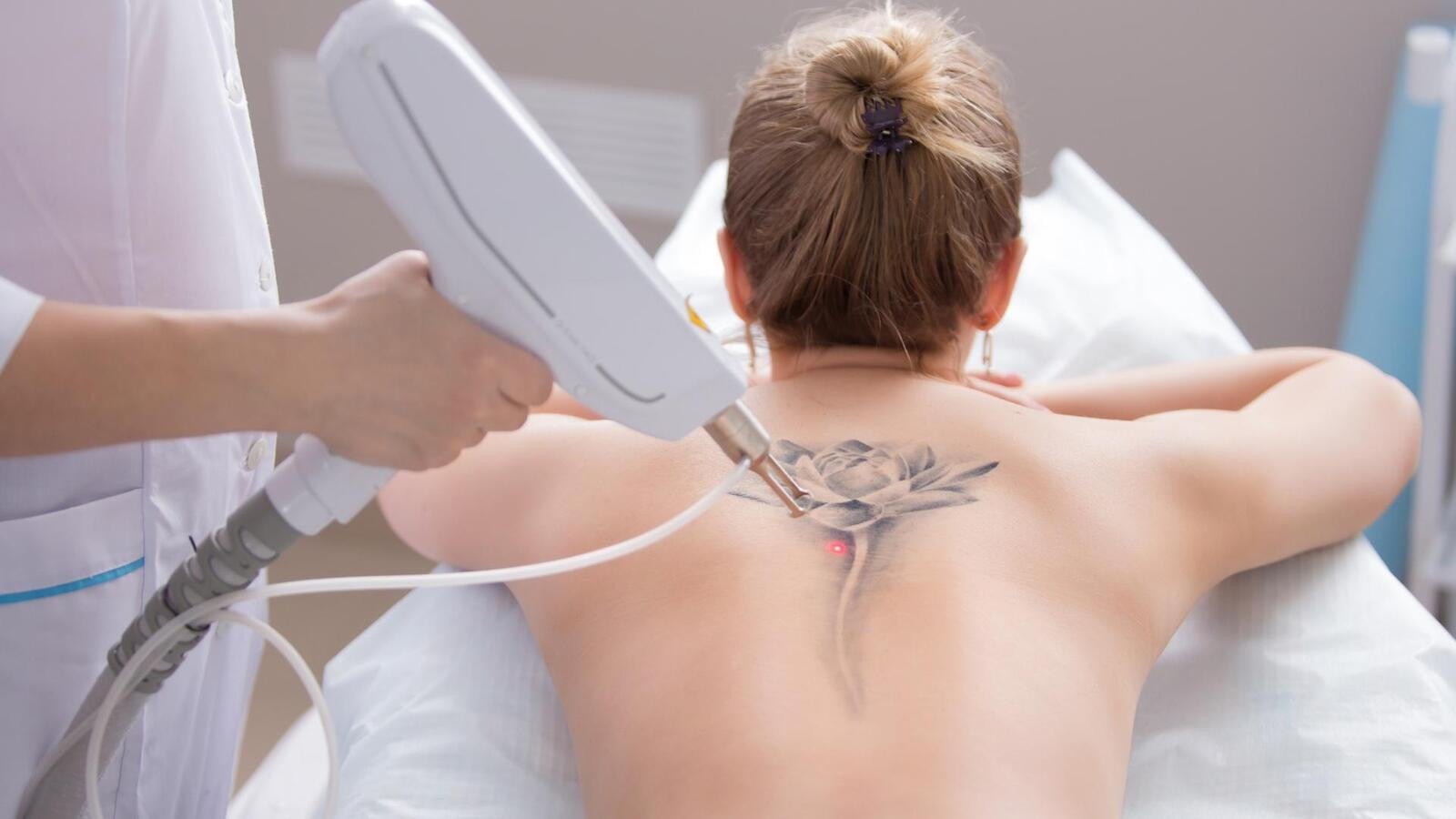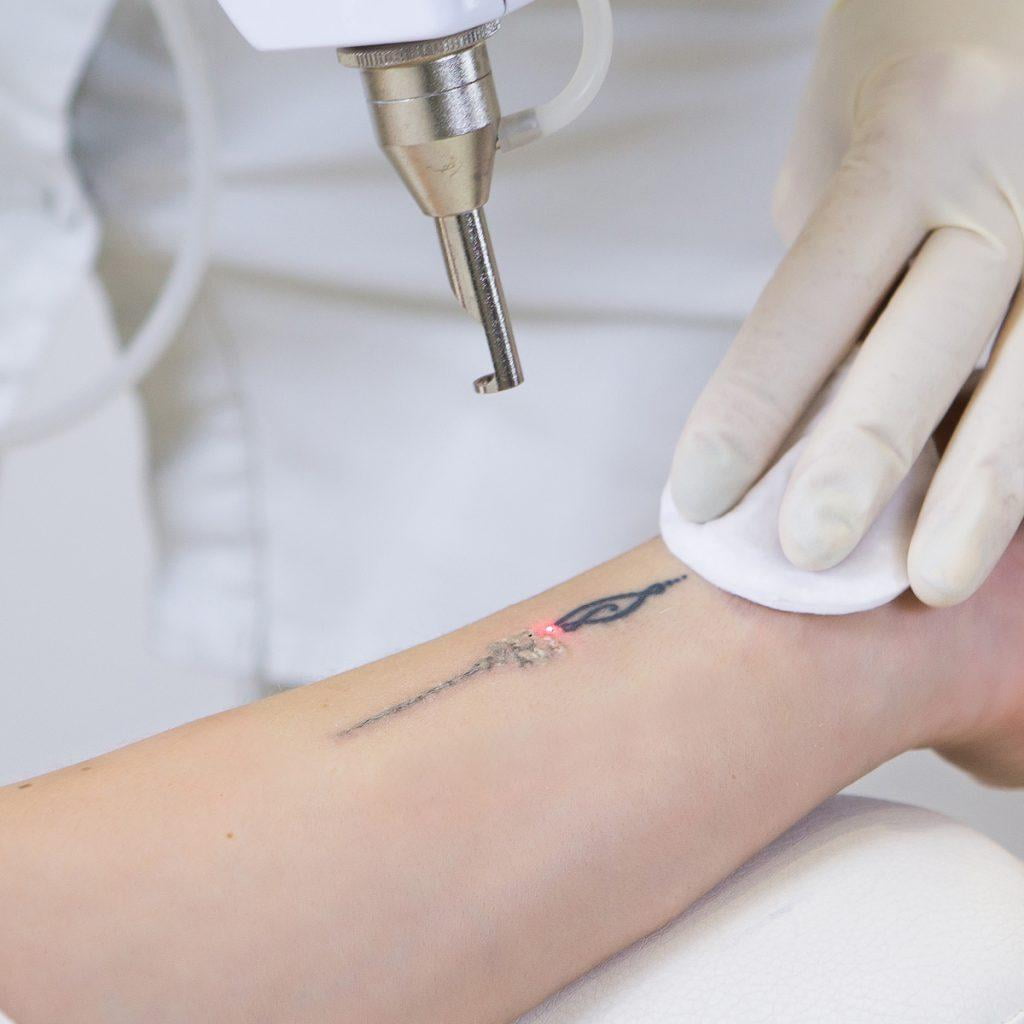Did you know...
67% OF PEOPLE WHO HAVE HAD A TATTOO REGRET THEIR DECISION?
If you fall into that 67% perhaps because of design, colour or even the associations you have with your tattoo then our laser tattoo removal is the perfect thing for you. It is an effective way of banishing your unwanted tattoos using a specialist laser called Q- Switch laser.
HOW DOES LASER TATTOO REMOVAL WORK?
Laser is the most successful way of removing unwanted tattoos.
Laser tattoo works by allowing the light produced by the laser to pass through the skin and break up the tattoo ink into tiny particles. The body then disposes of these fragments via its immune system.
HOW LONG WILL IT TAKE?
Although it is not possible to predict the number of sessions required for complete removal
Most patients generally need 6-8 treatments to ensure success. Larger tattoos may take 10 or more. With a minimum of 6-week intervals between each session. This is something that will be discussed at the consultation as each tattoo and person is different and timing all depends on skin colour, tattoo colour and much more.
WHAT TO EXPECT?
If you have never had tattoo removal done before it can be daunting when you don’t know what to expect. While there can be discomfort while treatment is taking place no more than the original tattoo itself. Laser tattoo removal is a safe and easy solution to remove your unwanted tattoo.
A full consultation and patch test is needed
before any treatment can take place.
Cost: from £45
pre-treatment and aftercare
Please note
Taking care of the skin that is going to be treated is incredibly important for your safety and comfort, as well as to ensure the treatment is as effective as possible whilst minimising the risk of scarring.
It is imperative that you understand how to care for your skin before and after laser tattoo removal treatment, and follow all instructions given on this leaflet and by your practitioner, including what to avoid, what to do and what to look out for!
If the scab continues to weep excessively, is subject to cracking due to movement or external forces or you have any concerns that the healing is contrary to expectations, it is imperative that you contact your practitioner at the earliest possible opportunity.
If an infection persists, you will need to consult your doctor to obtain oral antibiotics. Forcibly removing the scab will cause excessive trauma to the skin, resulting in scarring.
In order for treatment to be successful and effective with minimal potential adverse effects as possible you must follow the aftercare routine as indicated on this page and discussed with your Nu-U.
If you have any concerns, please contact me.
Pre-Treatment Care
- Avoid exercise on the day of treatment.
- Avoid applying any products on area, keep the treatment area dry and clean prior to treatment.
- Avoid exposing the skin to UV light (sunlight or sun beds) or applying any self-tanning products for 4 weeks prior to treatment. For areas that are exposed to the sun daily, use SPF50 sunscreen.
- Ensure the area to be treated is clear from any rash, spots, irritation or inflammation.
After treatment
- Avoid exposing the skin to UV light (sunlight or sunbeds) or self-tan during the treatment. This is to minimise darkening of the skin (hyperpigmentation).
- Avoid heat treatments such as spas, steam rooms and saunas for 4 weeks after treatment.
- Avoid exercising for 4 days after treatment.
- Avoid hot baths and hot showers for 2 weeks after treatment (cool showers or baths are fine).
- Avoid anything that involves chlorine (e.g. swimming) for 7 days after treatment.
- Avoid make up on the treated area for 3 days after treatment.
- Avoid the application of perfumed products until the area is fully healed.
- Avoid scratching the treatment area if blistering or crusting occurs as this can cause scarring.
- Avoid shaving, waxing, tweezing and threading for 2 weeks after treatment.
- Avoid any facial treatments for 4 weeks after the treatment session on face.
- Avoid any other laser treatments on the same area for 4 weeks after treatment.
- Beware of steam from ovens and hot car journeys.
- Do apply an ice-pack through protective cloth on the treated area to reduce pain, discomfort or irritation, if required.
- Do wear loose clothes to avoid friction on the treated area for 3 days after treatment.
- Do drink plenty of water.
- Do use SPF50 sunscreen for 4 weeks after treatment.
- If a dressing is provided after the treatment session, please ensure it is removed at 3 hours to ensure optimum protection without the risk of the wound becoming damp and sweaty which can damage the skin.
- If the treated area becomes wet after bathing or showering, gently press it dry with a clean tissue or towel (avoid rubbing).
- If the treated area blisters, it is imperative that the blister is not broken as this will lead to infection. Keep the area dry and clean.
- Allow the treated area to ‘breathe’ as much as is reasonably possible without dressing or clothing (be aware of exposure to sunlight).
- Do not be tempted to scratch or rub the treated area during the healing process.



